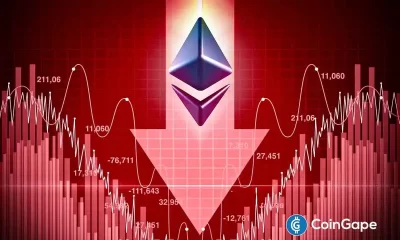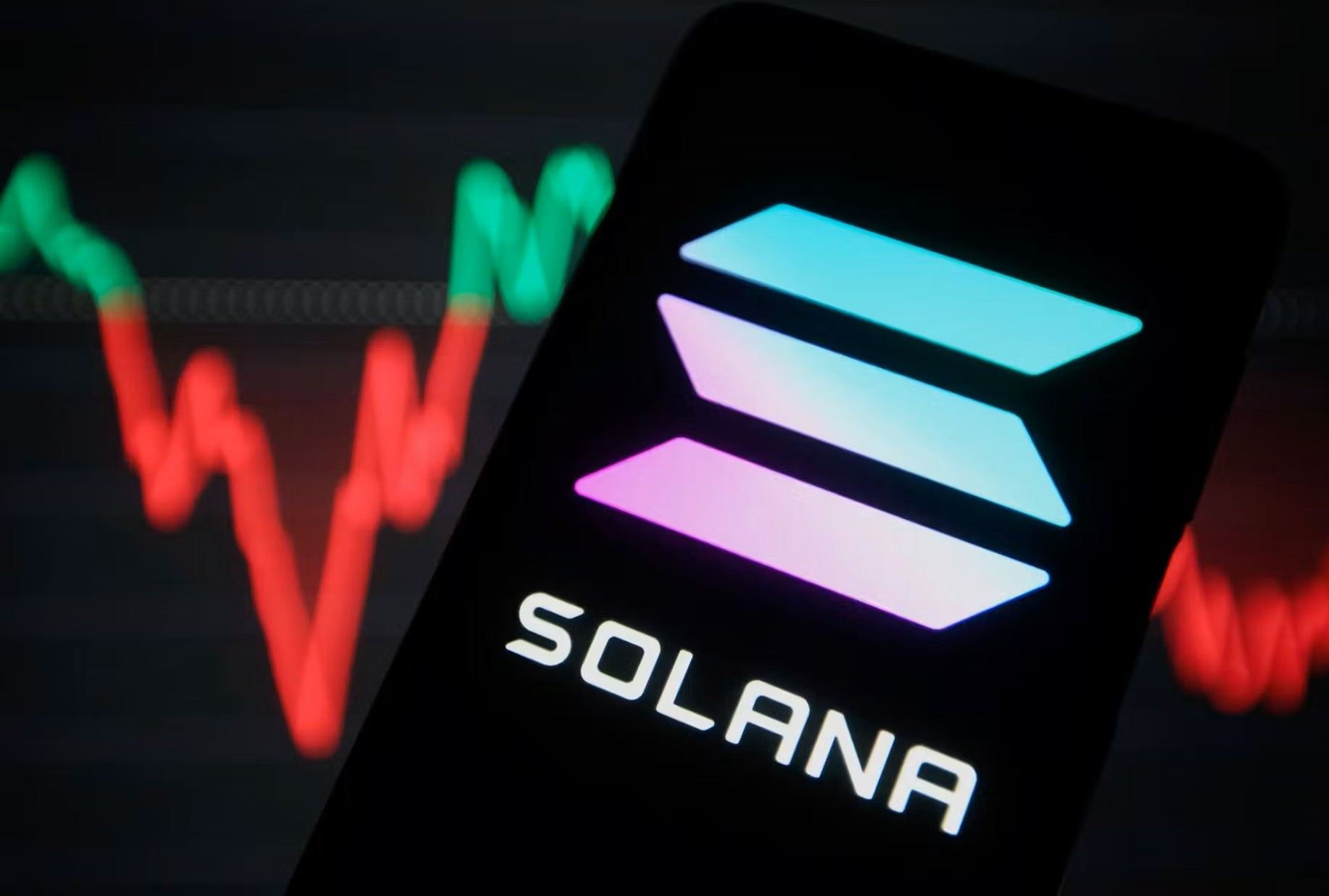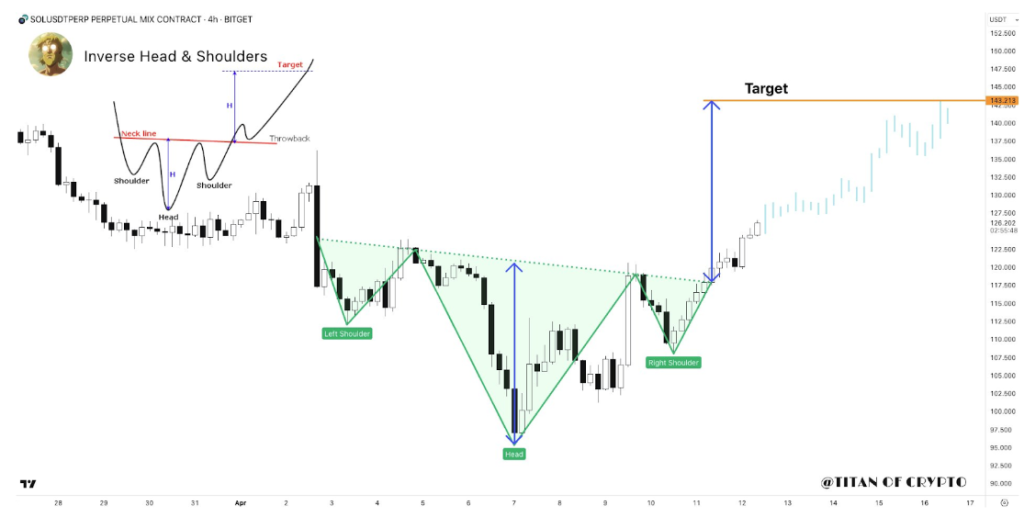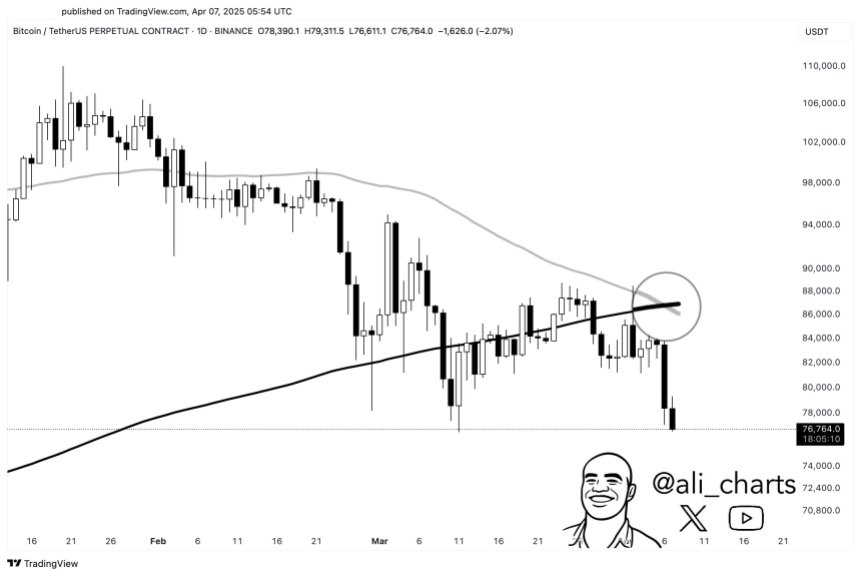cryptocurrency
Bhutan’s Bitcoin holdings surpass $1b
Published
5 months agoon
By
admin

Bhutan, the Himalayan kingdom renowned for its happiness index, has seen its Bitcoin holdings surge to over $1 billion as the crypto market rallies.
Arkham, in data shared via X on Nov. 11, revealed that the Royal Government of Bhutan’s total Bitcoin (BTC) holdings had surpassed the $1 billion mark. The blockchain intelligence and analytics platform’s post came as the flagship cryptocurrency soared amid massive bullish momentum.
Bhutan’s foray into crypto isn’t new, with the South Asia country having invested millions of dollars in digital assets before. The country also sought partnerships with Bitcoin miners and in May 2023, allocated 5% of its gross domestic product on mining the world’s most popular cryptocurrency.
In September this year, Bhutan’s BTC holdings increased to over 13,000 bitcoins with the total value at the time around $750 million. While the figure was much lower than huge holdings of the United States, China and the United Kingdom, Bhutan held more than El Salvador. Notably, El Salvador is the first country to adopt Bitcoin as legal tender.
According to Arkham, Bhutan now holds 12,568 BTC, valued at more than $1 billion as Bitcoin’s price crossed the $82,000 level. The current value of Bhutan’s BTC holdings stands at $1.08 billion.
This figure could rise further if Bitcoin’s price continues its upward momentum, potentially exceeding $86,000 amid market enthusiasm.
Bhutan’s strategy contrasts with that of Germany, which sold its entire 50,000 Bitcoin holdings earlier this year, contributing to selling pressure on BTC.
Additionally, former U.S. President Donald Trump pledged during his campaign to never sell U.S. Bitcoin holdings, vowing instead to create a strategic Bitcoin reserve.
Source link
You may like


Crypto Trader Unveils Massive Bitcoin Price Target Amid Extended BTC Bull Market – Here’s His Outlook


Is it possible to make $1m with crypto?


Japan’s Metaplanet Buys Another $26M in Bitcoin Amid Tariff Market Uncertainty


Has Ethereum Price Bottomed? 3 Reason Why ETH Could Crash More


Crypto markets ‘relatively orderly’ despite Trump tariff chaos: NYDIG


Fartcoin ‘Hot Air Rises’ — $1.50 Just A Whiff Away
Altcoin
Solana Price Eyes Breakout Toward $143 As Inverse Head & Shoulders Pattern Takes Shape On 4-hour Chart
Published
15 hours agoon
April 13, 2025By
admin
Reason to trust

Strict editorial policy that focuses on accuracy, relevance, and impartiality
Created by industry experts and meticulously reviewed
The highest standards in reporting and publishing
Strict editorial policy that focuses on accuracy, relevance, and impartiality
Morbi pretium leo et nisl aliquam mollis. Quisque arcu lorem, ultricies quis pellentesque nec, ullamcorper eu odio.
Solana appears to be gearing up for a major technical breakout, with recent price action building up an interesting chart formation. A familiar bullish pattern has formed, and if validated, it could drive the price to a level not seen in recent weeks. This new development was highlighted by popular analyst Titan of Crypto on social media platform X.
Pattern Breakout Sets $143 In Sight
Like every other large market-cap cryptocurrency, Solana has experienced an extended period of price crashes since late February. In the case of Solana, this price crash has been drawing out since January, when it reached an all-time high of $293 during the euphoria surrounding the Official Trump meme coin. Since then, Solana has corrected massively, even reaching a low of $97 on April 7.
Related Reading
The price action before and after this $97 low has created an interesting formation on the 4-hour candlestick timeframe chart. As crypto analyst Titan of Crypto noted, this formation is enough to send Solana back up to $143.
At the heart of the latest bullish outlook is a clearly defined inverse head and shoulders structure, which is known for its reliability in signaling a reversal from a downtrend to a bullish breakout. The left shoulder of the pattern began forming in early April as Solana attempted to rebound from sub-$110 levels. The subsequent drop to the $96 bottom on April 7 formed the head of the structure. From there, a recovery started as buyers cautiously stepped back in, giving rise to the right shoulder.
The breakout of the neckline resistance has taken place in the past 24 hours. With this in mind, Titan of Crypto predicted that $143 becomes the next logical destination based on the measured move from the head to the neckline.

Image From X: Titan of Crypto
Momentum Strengthens With Structure Confirmation
Looking at the chart shared by the analyst, the momentum behind Solana’s price movement appears to be gaining strength. Trading volume is an important metric in evaluating the strength of a breakout, and the volume accompanying the recent breakout above the neckline seemingly confirms it.
Particularly, Solana has seen a 5.3% increase in its price during the past 24 hours, with trading volume surging by 3.76% within this timeframe to $4.21 billion.
Although it is common to see a throwback or minor consolidation just above the neckline, the projected path suggests continued upside as long as price action holds above that key breakout zone.
Related Reading
At the time of writing, Solana is trading at $129, 10% away from reaching this inverse head-and-shoulder target. A move to $143 would not only represent a meaningful recovery from April’s lows but could also improve the confidence in Solana’s price trajectory moving into Q2. The next outlook is what happens after it reaches this target of $143, which will depend on the general market sentiment.
Featured image from The Information, chart from TradingView
Source link
Bitcoin
The tariff war fallout: Is crypto to the rescue?
Published
3 days agoon
April 11, 2025By
admin
Disclosure: The views and opinions expressed here belong solely to the author and do not represent the views and opinions of crypto.news’ editorial.
The Trump administration introduced new tariffs and expanded existing ones, which resulted in increasing trade tensions among major partners like China, the European Union, and Mexico. Global financial markets are significantly impacted by these actions, which causes increased economic uncertainty and volatility. These tariffs are aimed at a range of products, from aluminium and steel to cars and various electronic components. Unsurprisingly, some countries have responded with counter-tariffs on US exports, which could potentially trigger a big trade war.
This back-and-forth has resulted in increased trade barriers, which are slowing down economic growth—a trend that’s evident in recent macroeconomic indicators, including the Conference Board consumer sentiment index. Consequently, forecasts for US GDP growth have been adjusted downward due to the impact of these tariffs. The automotive sector, which relies heavily on imported parts, is also feeling the pinch, with Ford Motor Co. recently announcing a significant cut in expected dividends.
How trade barriers are turning Bitcoin into a global safe haven
Donald Trump’s recent actions prove that his attitude towards his tariffs is very consistent and goal-oriented, which has sparked a ‘contrarian’ positive outlook for cyclically resistant investment assets, where Bitcoin (BTC) occupies a special position. With rising tariffs and inflation worries, more people are turning to alternative, discorrelated assets, which are broadly viewed as a safeguard against both inflation and impending economic instability in general.
Historically, Bitcoin has proven to be quite resilient during tough economic times. For instance, during market upheavals—like the banking sector turmoil we saw in 2023 following the collapse of Silicon Valley Bank—Bitcoin evidently experienced price surges, hinting at a “flight to safety” trend being formed robustly and meaningfully. However, to date, such trends remain mostly perceptional and, therefore, unfortunately, hard to quantify and algorithmize.
Having said that, the fact that the US is still at the forefront of various innovative efforts in cryptocurrency and AI somewhat mitigates the broader implications of the tariff situation. Recently, Senator Cynthia Lummis (R-WY) put forth a legislative proposal suggesting that the US should acquire one million BTC, representing about 5% of the total fixed supply. This initiative is expected to spark a new wave of significant activity in the crypto market.
The combination of supportive government policies for crypto and the expectation of more tariff actions will likely create a complex but potentially very favorable market sentiment for Bitcoin. Once again, investors, swayed by these developments, are starting to see Bitcoin as a safe haven with the potential for sustained growth in a post-tariff landscape. The current market vibe, shaped by Trump’s tariff strategies and the prospect of long-term shifts, makes Bitcoin look like a low-downside-high-reward investment opportunity.
AI and robotics: Winners in the tariff war
Meanwhile, AI-aided automation and robotics are on the rise as increasing import costs from China push American manufacturers to cut labor costs. Similarly, countries like Vietnam and India are reaping the benefits as global companies relocate their manufacturing operations from China to avoid tariff-related expenses. Additionally, I see a lot of promise in sectors like AI, nuclear energy, and other manufacturing industries, which have the chance to set up operations in the United States.
Integrating AI and automation within manufacturing industries can drive greater adoption of Bitcoin as a secure and efficient method of financial transactions, incorporated into metaverse and web3 ecosystems. Furthermore, the demand for AI technologies to support automated processes will likely surge, presenting new investment opportunities in the AI sector. Most importantly, the synergy between AI-aided automation, robotics, Bitcoin, and AI investments has the potential to reshape the future of the manufacturing and technology industries, which will drive even more attention to Bitcoin.
Tariffs, trade wars, and rising risks: What investors should watch out for
Trade barriers may—at least initially—disrupt certain supply chains, increase business costs, and reduce export demand due to retaliatory tariffs. Instability in one major market or economy due to trade tensions can spill over to other countries and regions, creating a global ripple effect. This can lead to lower investment, reduced hiring, and overall slower economic expansion, potentially even triggering a recession where gold and alternative assets like Bitcoin would definitely play special risk aversion roles, making their increasingly anti-correlative Betas more and more attractive for ordinary investors to “join the club.”
It is important to keep the focus on the long term and invest in industries with high potential, such as AI, nuclear energy, healthcare, and rare earth metals. There may be some transitory, recoverable meltdown because the market is overvalued due to years of way-too-buoyant liquidity and overrated optimism. Still, if companies decide to quickly move to make production in the US and replace costly outsourcing, they have a great future due to the huge domestic market in this world’s largest economy.
To navigate the challenges of this shaky market, both private investors and institutions can use a variety of diversification strategies. One effective approach is asset class diversification, which involves spreading investments across different types of assets like stocks, bonds, real estate, commodities, and certainly alternative options like Bitcoin and other cryptocurrencies. Additionally, it’s important to consider both developed and emerging markets while using various investment strategies—like value investing, growth investing, or dividend investing—which normally yield different results in different market conditions.
Final words
Currently, the market’s reaction to Trump’s tariffs suggests that Bitcoin is becoming more discorrelated to broader macroeconomic and geopolitical factors and, hence, more appealing regarding both asset-protection and investment portfolio hedging purposes. Historically, Bitcoin demonstrated notable resistance to economic cycles and episodes of banking system instability. Now, it offers a legitimate test of its suitability as a risk aversion tool for real-world economic troubles. Its inclusion in the U.S. strategic reserve further underpins this thesis.

John Murillo
John Murillo is the chief dealing officer of B2BROKER, a global fintech solutions provider for financial institutions. John is a seasoned trading professional with more than 20 years of experience in capital markets. Throughout his professional life, John has managed broker-dealer business, performed risk management for trading desks with high volumes, and worked with institutional clients worldwide to deliver tailored liquidity solutions. He has been part of B2BROKER since its early days, ensuring the company grows and functions effectively. At B2BROKER, he is responsible for all the facets of liquidity, ensuring client setups are seamless before going live and enhancing internal risk management procedures. Treasury operations, creating strategic services, and expanding international market presence are also among his duties.
Source link
Bitcoin
Bitcoin Flashes ‘Death Cross’ Amid Tariff-Induced Market Turmoil
Published
6 days agoon
April 8, 2025By
admin
Reason to trust

Strict editorial policy that focuses on accuracy, relevance, and impartiality
Created by industry experts and meticulously reviewed
The highest standards in reporting and publishing
Strict editorial policy that focuses on accuracy, relevance, and impartiality
Morbi pretium leo et nisl aliquam mollis. Quisque arcu lorem, ultricies quis pellentesque nec, ullamcorper eu odio.
The global equity and cryptocurrency markets experienced significant downturns earlier today, as US President Donald Trump’s country-specific reciprocal tariffs are set to take effect on April 9. The leading cryptocurrency, Bitcoin (BTC), has declined by more than 7% in the past 24 hours, and analysts predict further near-term challenges for the digital asset.
US Tariffs Lead To Crypto Market Rout
Notably, Trump’s baseline 10% tariffs on all countries went into effect on April 5, while the higher, country-specific reciprocal tariffs are scheduled to commence on April 9. These developments have raised fears of a global recession and widespread job losses.
Related Reading
The digital assets market has felt the impact of these tariffs, with BTC slipping over 7% in the past 24 hours – from approximately $82,300 on April 6, to a low of around $74,500 earlier today.
Altcoins such as Ethereum (ETH), Solana (SOL), and XRP have experienced even greater declines, tumbling by 17.2%, 16%, and 15.8% respectively over the past 24 hours. Similarly, the total crypto market capitalization has shed almost $130 billion during the same period.
Commenting on BTC’s price action amid the market turmoil, seasoned crypto analyst Ali Martinez highlighted that there may be more challenges ahead for the leading digital asset, as it has flashed the infamous death cross on the daily chart, indicating the potential for further price pullbacks.

For the uninitiated, a death cross is a bearish technical signal that appears when the 50-day moving average (MA) drops below the 200-day MA. It often suggests a potential downtrend or increased selling pressure in the market.
Similarly, veteran trader Peter Brandt shared the following chart, showing BTC trading in a symmetrical triangle pattern, with a wedge retest located at $81,024. The trader hinted that BTC may follow a drop to the 50% retracement level of $54,000.

To elaborate, a symmetrical triangle pattern in trading is a chart formation where the price consolidates with converging trend lines connecting a series of lower highs and higher lows, indicating a period of indecision before a potential breakout in either direction.
Similarly, a wedge retest refers to the price action where, after breaking out from a wedge pattern – a formation with converging trend lines – the price returns to test the breakout level before continuing in the breakout direction.
An Opportunity To Stack Bitcoin?
While heightened fears surrounding further price declines in BTC have unsettled investors and traders alike, some risk-seeking investors view this as an opportunity to accumulate more BTC at lower prices.
Related Reading
For instance, CryptoQuant analyst BorisVest, in a recent analysis, emphasized that if BTC falls between $65,000 to $71,000, it could offer a favorable buying opportunity for investors with a decent risk-reward ratio. At press time, BTC trades at $76,678, down 7.5% in the past 24 hours.

Featured image created with Unsplash, charts from X and TradingView.com
Source link

Crypto Trader Unveils Massive Bitcoin Price Target Amid Extended BTC Bull Market – Here’s His Outlook

Is it possible to make $1m with crypto?

Japan’s Metaplanet Buys Another $26M in Bitcoin Amid Tariff Market Uncertainty

Has Ethereum Price Bottomed? 3 Reason Why ETH Could Crash More
Michael Saylor Teases New Bitcoin Buy After Strategy’s $7.69 Billion Q1 BTC Buying Spree

Crypto markets ‘relatively orderly’ despite Trump tariff chaos: NYDIG

Fartcoin ‘Hot Air Rises’ — $1.50 Just A Whiff Away

What happened to the RWA token?

Crypto Strategist Sees Solana-Based Memecoin Surging Higher, Says One AI Altcoin Flashing Strong Chart

Mantra Team Responds As The OM Token Price Crashes Over 80% In 24 Hours

This Week in Crypto Games: Gaming Tokens Crash Out, Eve Frontier Opens Up

Commerce Secretary Lutnick walks back tariff relief on electronics

Gold ETF Inflows Hit Three-Year High as PAXG, XAUT Outperform Wider Crypto Market

Israel’s New Study Shows 51% Of Public Is Interested In Adopting CBDC (Digital Shekel) – Is That So?

Solana Price Eyes Breakout Toward $143 As Inverse Head & Shoulders Pattern Takes Shape On 4-hour Chart

Arthur Hayes, Murad’s Prediction For Meme Coins, AI & DeFi Coins For 2025

Expert Sees Bitcoin Dipping To $50K While Bullish Signs Persist

Aptos Leverages Chainlink To Enhance Scalability and Data Access

Bitcoin Could Rally to $80,000 on the Eve of US Elections

Crypto’s Big Trump Gamble Is Risky

Institutional Investors Go All In on Crypto as 57% Plan to Boost Allocations as Bull Run Heats Up, Sygnum Survey Reveals

Sonic Now ‘Golden Standard’ of Layer-2s After Scaling Transactions to 16,000+ per Second, Says Andre Cronje

Ripple-SEC Case Ends, But These 3 Rivals Could Jump 500x

Has The Bitcoin Price Already Peaked?

A16z-backed Espresso announces mainnet launch of core product

The Future of Bitcoin: Scaling, Institutional Adoption, and Strategic Reserves with Rich Rines

3 Voting Polls Show Why Ripple’s XRP Price Could Hit $10 Soon

Xmas Altcoin Rally Insights by BNM Agent I

Blockchain groups challenge new broker reporting rule

I’m Grateful for Trump’s Embrace of Bitcoin
Trending

 24/7 Cryptocurrency News5 months ago
24/7 Cryptocurrency News5 months agoArthur Hayes, Murad’s Prediction For Meme Coins, AI & DeFi Coins For 2025

 Bitcoin3 months ago
Bitcoin3 months agoExpert Sees Bitcoin Dipping To $50K While Bullish Signs Persist

 24/7 Cryptocurrency News3 months ago
24/7 Cryptocurrency News3 months agoAptos Leverages Chainlink To Enhance Scalability and Data Access

 Bitcoin5 months ago
Bitcoin5 months agoBitcoin Could Rally to $80,000 on the Eve of US Elections

 Opinion5 months ago
Opinion5 months agoCrypto’s Big Trump Gamble Is Risky

 Bitcoin5 months ago
Bitcoin5 months agoInstitutional Investors Go All In on Crypto as 57% Plan to Boost Allocations as Bull Run Heats Up, Sygnum Survey Reveals

 Altcoins2 months ago
Altcoins2 months agoSonic Now ‘Golden Standard’ of Layer-2s After Scaling Transactions to 16,000+ per Second, Says Andre Cronje

 Price analysis5 months ago
Price analysis5 months agoRipple-SEC Case Ends, But These 3 Rivals Could Jump 500x


